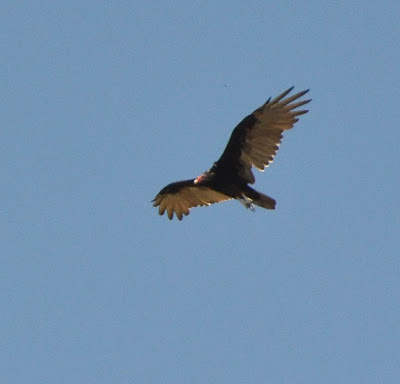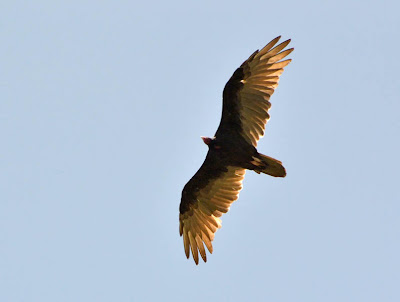There were at least seven and probably more; a mix of both black vultures and turkey vultures which is fairly common in this large a group. According to WhatBird.com, "A group of vultures has many collective nouns, including a 'cast', 'committee', 'meal', 'vortex', and 'wake' of vultures." "Vortex" seems most appropriate for when they are in flight and it is perfect alliteration for the title.
The first three photos are black vultures and the others are turkey vultures. Black vultures have a grey head with white primary and black secondary wing feathers. Turkey vultures have a red head with white primary and secondary wing feathers. Also, the two have different wing positions when soaring. The black vulture's wings are nearly flat, while the turkey vulture's wings are in a characteristic dihedral curve.
I'm not sure why, but my experience has been that vultures like to pose for the camera when in flight. Perhaps, they just have an innate curiosity about what the human on the ground with the shiny object (the camera lens) is doing.
My first experience with this was at the Hill Country State Natural Area in 2002. I was walking from the parking lot into the woods. A turkey vulture kept circling low overhead as I walked along the trail. I was starting to get a little unnerved by this, so I raised the camera and took a photo of it. As soon as I snapped the shutter, the vulture flew off. I am convinced it was giving me every opportunity to take the photo and circled patiently until I did.
Whatever the reason, I can almost always count on them to make at least one low pass overhead when I am photographing them. Yesterday, August 17, at the Medina River Natural Area was no exception:
While they may not be the most beautiful bird up close and personal, in flight, they are a wonder to behold.














No comments:
Post a Comment